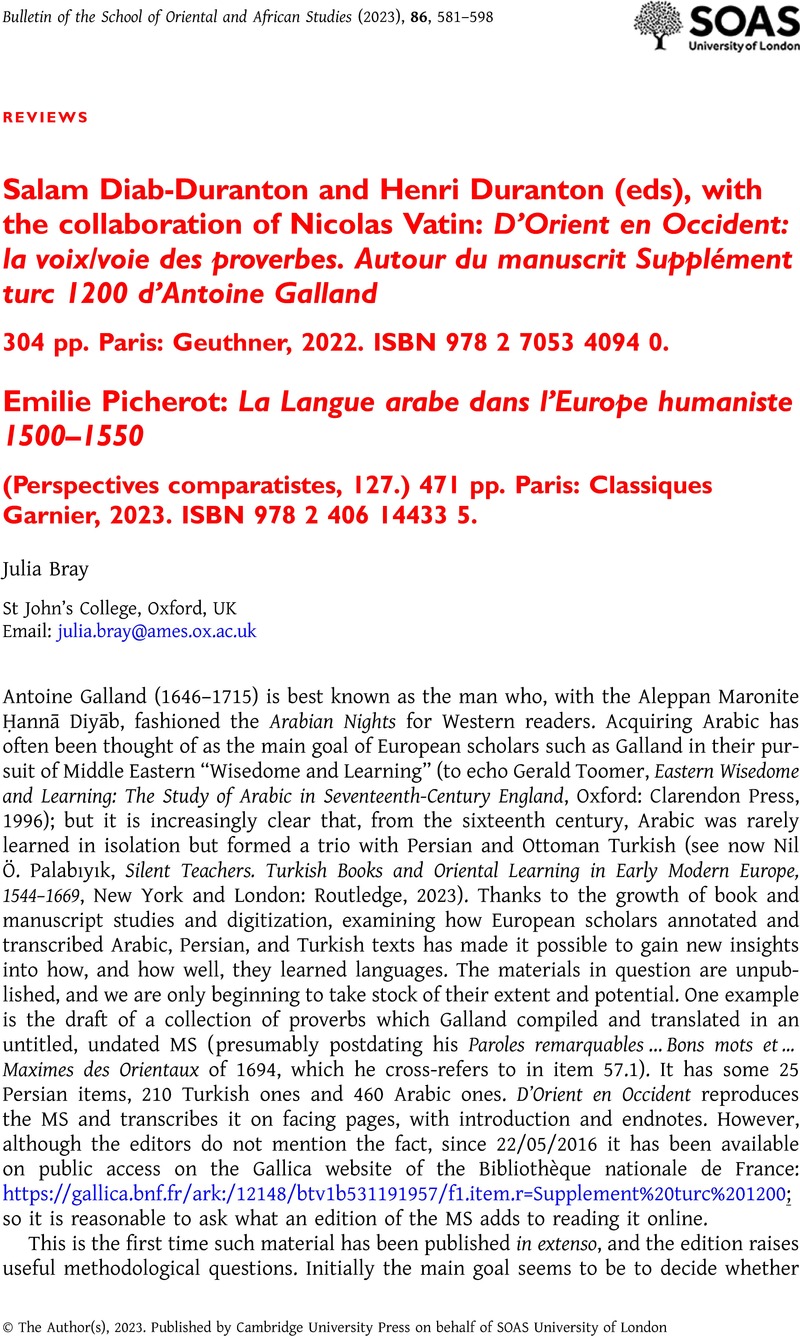No CrossRef data available.
Article contents
Salam Diab-Duranton and Henri Duranton (eds), with the collaboration of Nicolas Vatin: D'Orient en Occident: la voix/voie des proverbes. Autour du manuscrit Supplément turc 1200 d'Antoine Galland 304 pp. Paris: Geuthner, 2022. ISBN 978 2 7053 4094 0. - Emilie Picherot: La Langue arabe dans l'Europe humaniste 1500–1550 (Perspectives comparatistes, 127.) 471 pp. Paris: Classiques Garnier, 2023. ISBN 978 2 406 14433 5.
Review products
Salam Diab-Duranton and Henri Duranton (eds), with the collaboration of Nicolas Vatin: D'Orient en Occident: la voix/voie des proverbes. Autour du manuscrit Supplément turc 1200 d'Antoine Galland 304 pp. Paris: Geuthner, 2022. ISBN 978 2 7053 4094 0.
Emilie Picherot: La Langue arabe dans l'Europe humaniste 1500–1550 (Perspectives comparatistes, 127.) 471 pp. Paris: Classiques Garnier, 2023. ISBN 978 2 406 14433 5.
Published online by Cambridge University Press: 11 December 2023
Abstract
An abstract is not available for this content so a preview has been provided. Please use the Get access link above for information on how to access this content.

- Type
- Reviews
- Information
- Copyright
- Copyright © The Author(s), 2023. Published by Cambridge University Press on behalf of SOAS University of London



